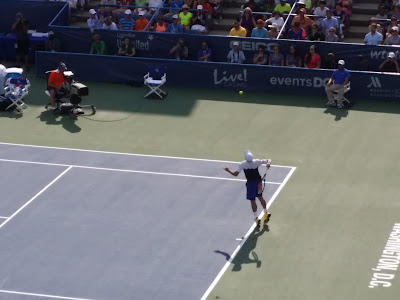As a fellow tennis player, I've had my fair share of angry outbursts on the tennis court. It's often pent up emotion that finally let's loose on an unforced error, bad serve or misplaced shot. Regardless of why, it's important not to let emotions get the better of you, as it will severely hamper your performance. There are exceptions to this, but not everyone is John McEnroe. Keeping a positive mentality is key to playing well throughout a match. Before getting into ways to deal with frustration, let's see how even professionals are prone to angry outbursts, some more extreme than others.
Racquet smashes are one of the most common ways for players to exert their anger. Sadly, I'm guilty of this. The instance of smashing the racquet feels relieving for a few moments, but soon you will be overwhelmed with regret. Tennis racquets can get expensive, so that's an investment down the drain if you are so inclined to smash it. So here's some advice... don't smash your racquets.
Now, How do you avoid getting angry? Well, for recreational players at least, remember you are playing for fun. That's why you play right? How can you have fun if you are too busy being angry? Try to remember the reasons you are playing in the first place. Whether it's for exercise or for fun, don't lose sight of that. Win or lose, there's always a next time.
Here are some ways I deal with anger that may be creeping up on me:
- Think of something positive. This could be anything that makes you happy or smile.
- Take deep breathes and relax your muscles. Anger makes muscles tense up and that creates tense shots. I like to take a second and breath to refocus my attention.
- Hop up and down. I see professionals do this, so it must work somehow. I've tried it and it does seem to calm me down when I'm tense. Hey, whatever works.
- Remember, points are done and over with in a matter of seconds. Don't give them undeserved attention. There will be more... many more.
- If all else fails, I normally wear a hat if I desperately need something to throw that won't break my bank account.
























